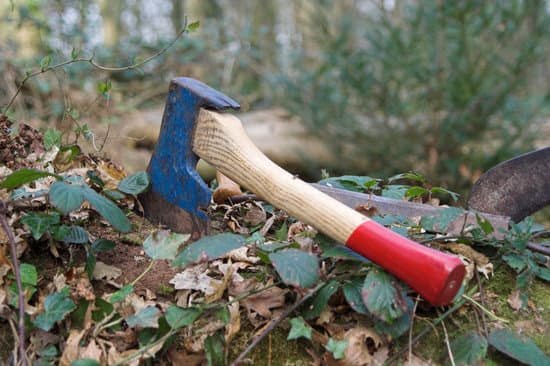Woodworking is a craft that requires precision, creativity, and the right tools. One essential tool that every woodworker needs in their arsenal is a router bit. But what exactly is a router bit and why is it so important in woodworking? In this article, we will delve into the world of router bits and explore its significance in woodworking success.
Router bits are cutting tools specifically designed for use with routers, which are power tools used for carving, shaping, and hollowing out different materials, including wood. The router bit is attached to the spindle of the router and rotates at high speeds to remove material from the workpiece. It is often referred to as the “business end” of a router because it determines the shape and design of the cuts made.
Understanding the basics of router bits is crucial for any woodworker. These small but powerful tools come in various shapes, sizes, and designs, each serving a specific purpose. From straight bits to round-over bits to chamfer bits, there are endless possibilities for creating intricate designs with a router bit. Having a good understanding of how these bits work allows woodworkers to unlock their creativity and achieve precise results in their projects.
With so many options available, choosing the right router bit can be overwhelming for beginners. Factors such as project requirements, type of cut needed, and personal preferences all play a role in selecting the right bit. In the following sections of this article, we will explore different types of router bits and share tips on how to choose the best one for your woodworking projects.
As you continue reading this article, you will discover not only popular uses of router bits in woodworking but also safety tips for using them effectively. We will also discuss maintenance techniques to extend the lifespan of your router bits and troubleshoot common issues that may arise during woodworking tasks.
Understanding the Basics
A router bit is a cutting tool that is specifically designed for use with a woodworking router. It is commonly made of high-speed steel or carbide and is used to hollow out or shape wood for various woodworking projects. The router bit attaches to the collet of the router and rotates at a high speed, allowing it to remove material from the workpiece.
Router bits come in a wide variety of shapes and sizes, each with its own specific use. Some common types of router bits include:
- Straight Bits: These are the most basic type of router bits and are used for making straight cuts and grooves in wood.
- Flush Trim Bits: These bits are used to trim one piece of wood flush with another, ensuring a clean and even edge.
- Chamfer Bits: Chamfer bits create beveled edges on the corners of wood pieces, adding decorative detail.
- Rabbeting Bits: Rabbeting bits are used to create recesses or grooves along the edge of a workpiece.
- Cove Bits: Cove bits create concave profiles along the edges of wood.
In addition to these, there are many other specialized router bits available for specific woodworking tasks such as making raised panels, creating decorative moldings, and carving intricate designs. The choice of router bit depends on the specific project requirements and desired outcome.
Understanding how different router bits work and when to use them is essential for achieving accurate and professional results in woodworking. It is also important to consider factors such as the size and type of material being worked on, as well as the desired level of precision and detail. With proper knowledge and selection of router bits, woodworkers can unlock their creativity and achieve intricate designs in their projects.
| Type | Use |
|---|---|
| Straight Bits | Making straight cuts and grooves in wood |
| Flush Trim Bits | Trimming one piece of wood flush with another |
| Chamfer Bits | Creating beveled edges on the corners of wood pieces |
| Rabbeting Bits | Creating recesses or grooves along the edge of a workpiece |
| Cove Bits | Creating concave profiles along the edges of wood |
Different Types of Router Bits
Straight Bits
One of the most common types of router bits is the straight bit. As the name suggests, these bits have a straight cutting edge that is ideal for making straight cuts in wood. Straight bits come in various sizes, allowing you to create different depths and widths of cuts. They are often used for tasks such as dadoing, grooving, and making rabbet joints.
Rabbeting Bits
Rabbeting bits are specifically designed for cutting rabbets, which are recesses along the edge of a piece of wood. These bits typically have a pilot bearing at the top to guide the bit along the edge of the material. Rabbeting bits can be adjusted to create various depths and widths of rabbets, making them versatile for different woodworking projects.
Flush Trim Bits
Flush trim bits are essential when you need to trim or smooth edges flush with another surface. These bits have a pilot bearing at the top that rides along an adjacent surface while their cutting edges remove excess material. Flush trim bits are commonly used for tasks like trimming laminate or veneer edges, producing clean and uniform results.
Chamfer Bits
If you’re looking to create decorative finishes or beveled edges on your woodworking projects, chamfer bits are the way to go. These router bits have angled cutting edges that allow you to cut chamfers at various angles and depths. Chamfer bits can add sophistication and dimensionality to your workpieces, enhancing their overall aesthetic appeal.
In addition to these four types mentioned above, there is a vast array of specialized router bits available on the market. Each one serves a specific purpose and can help you achieve unique designs and joinery techniques in your woodworking projects. It’s crucial to explore these various shapes and designs to expand your creative possibilities as a woodworker.
Choosing the Right Router Bit
Choosing the right router bit is crucial for achieving successful woodworking projects. There are several factors to consider when selecting a router bit, including the material being worked on, the desired outcome, and the type of router being used. By understanding these factors and making informed decisions, woodworkers can ensure that they have the right tools to achieve their desired results.
Material Compatibility
One important factor to consider when choosing a router bit is material compatibility. Different router bits are designed to work with specific materials such as wood, plastic, or metal. It is essential to choose a router bit that is specifically designed for the material you are working with to ensure clean and precise cuts. Using the wrong router bit can lead to dull blades, chipping, or rough edges.
Bit Type
Router bits come in various types based on their cutting edge design and purpose. Straight bits are commonly used for basic straight cuts and grooves. Flush trim bits are ideal for trimming edges or duplicating patterns by following a template. Chamfer bits create beveled edges or angles on the workpiece. Rabbeting bits are used for creating grooves or notches along an edge. Cove bits produce concave shapes, while roundover bits create rounded edges.
Bit Size
Another factor to consider when choosing a router bit is its size. Router bits come in different diameters and lengths, which determine their cutting capacity and reach. The size of the router bit should correspond with the depth and width of cuts needed for your project. It’s essential to select a router bit that can effectively remove the desired amount of material without causing strain on both the bit and the router.
Considering these factors will help woodworkers narrow down their options and choose the right router bit for their specific woodworking project. It’s important to do thorough research and consult experienced woodworkers or professionals if needed to make an informed decision. Using the appropriate router bit will not only result in better woodworking outcomes but also ensure safety and efficiency during the process.
Popular Uses of Router Bits in Woodworking
Router bits are essential tools in woodworking that allow craftsmen to unlock their creativity and achieve precise and intricate designs. The use of different types of router bits allows woodworkers to create a wide range of decorative edges, profiles, and joints. In this section, we will explore some popular uses of router bits in woodworking.
One common use of router bits is for creating decorative edges on wooden pieces. With the vast selection of router bit profiles available, woodworkers can add beautiful details to tabletops, cabinet doors, and other furniture pieces. The most common edge profiles include the round-over, chamfer, cove, and ogee. These profiles can give a plain wooden surface a polished and professional look.
Another popular use of router bits is for making joinery cuts. Router bits can create joints such as dadoes, rabbets, and dovetails with precision. These joints are crucial in woodworking projects as they provide strength and stability to the overall structure. Dovetail joints achieved with specialized dovetail router bits are particularly known for their elegance and strength.
Woodworkers also use router bits for carving intricate designs onto wooden surfaces. By using specialized carving or engraving router bits, craftsmen can create stunning patterns or designs on furniture or decorative items like picture frames or plaques. This technique adds a personalized touch to the finished piece and showcases the creativity and skill of the woodworker.
Overall, router bits are versatile tools that enable woodworkers to unleash their creativity while achieving precision in their projects. Whether it’s adding decorative edges, creating strong joints, or crafting intricate designs, the possibilities with router bits are endless. By carefully selecting the appropriate type of router bit for each task and using proper techniques, woodworkers can achieve outstanding results in their woodworking endeavors.
How to Safely Use Router Bits
Using router bits in woodworking can greatly enhance your woodworking projects, but it’s important to prioritize safety when working with these powerful tools. Here are some tips and techniques for safely using router bits to ensure successful woodworking:
Wear Appropriate Safety Gear
When using router bits, it’s important to protect yourself from potential hazards. Always wear safety glasses or goggles to shield your eyes from flying wood chips and debris. Additionally, use ear protection to minimize the noise produced by routers. It’s also advisable to wear a dust mask or respirator to prevent inhalation of harmful wood dust.
Secure Your Workpiece
Before operating a router bit, make sure to firmly secure your workpiece with clamps or a vice grip. This will ensure that the material remains stable and prevents any unexpected movement during the cutting process, which could lead to accidents or inaccurate cuts.
Start Slowly
When starting a routing job, begin at a low speed before gradually increasing the RPM (revolutions per minute) as needed. This allows you to have better control over the tool and reduces the risk of kickback or chatter caused by excessive speed.
Proper Feeding Technique
To achieve clean and precise cuts, it’s essential to practice proper feeding technique. Move the router bit against the rotation of the tool in a smooth and consistent motion. Avoid applying too much pressure, as this can cause rough cuts or even damage the workpiece.
Use Featherboards and Push Sticks
Featherboards are useful accessories that help maintain constant pressure against the fence and keep your hands at a safe distance from the router bit during operations such as edge routing or dado cutting. Push sticks are also invaluable in keeping your hands away from the bit while providing control and support.
By following these safety tips and techniques, you can use router bits safely and efficiently to achieve successful woodworking results. Remember to always prioritize your safety and be mindful of the potential risks involved when working with power tools.
Maintenance and Care
Regular maintenance and proper care of router bits is essential for extending their lifespan and ensuring optimal performance in woodworking projects. Neglecting routine maintenance can lead to dull bits, decreased cutting efficiency, and potential safety hazards. This section will provide valuable information on how to maintain and care for your router bits, keeping them sharp and durable.
One crucial aspect of maintaining router bits is cleaning them after each use. Wood chips, dust, and resin build-up can accumulate on the cutting edges, affecting their performance. To clean your router bits, gently brush off any debris using a stiff nylon brush or toothbrush. For stubborn resin or pitch deposits, you can use specialized bit cleaner or denatured alcohol. Make sure to always wear protective gloves when handling these cleaning agents.
Proper storage is another key factor in preserving the lifespan of your router bits. Storing them in a dry environment away from humidity is important to prevent rust formation. Additionally, storing them individually or with adequate spacing between each bit reduces the risk of damage caused by contact with other tools.
Regular sharpening is also necessary to maintain the cutting edges of router bits. Dull bits not only result in poor cutting quality but also put excess strain on your woodworking equipment. Depending on the frequency of use, it’s recommended to sharpen your router bits after every 10-15 hours of operation. This can be done using a sharpening stone designed specifically for router bits or by taking them to a professional sharpening service.
To sum up, proper maintenance and care are vital for extending the lifespan of your router bits and ensuring consistent performance in woodworking projects. Regular cleaning, appropriate storage, and timely sharpening contribute towards maximizing their efficiency and reducing the risk of accidents during use.
| Maintenance Tips | Care Techniques |
|---|---|
| Clean after each use | Gently brush off debris with a stiff nylon brush |
| Store in a dry environment | Away from humidity and contact with other tools |
| Sharpen regularly | After every 10-15 hours of operation, use sharpening stone or professional service |
Exploring Advanced Techniques
When it comes to woodworking, using router bits opens up a world of possibilities for achieving intricate and complex designs. Advanced techniques using router bits allow woodworkers to create detailed patterns, decorative edges, and unique shapes that add a touch of elegance to their projects.
One advanced technique is the use of edge-forming router bits. These bits are specifically designed to create decorative edges on wooden surfaces. They come in various profiles, such as ogee, round-over, chamfer, and cove, each creating a different style and appearance. By carefully selecting the right edge-forming router bit and mastering the technique, woodworkers can add sophistication and beauty to their furniture pieces or trimwork.
Another advanced technique is the use of joinery router bits. These bits are used to create precise and strong joints in woodworking projects. Examples of joinery router bits include dovetail bits, finger joint bits, box joint bits, and mortise and tenon bits.
These specialized bits enable woodworkers to create interlocking connections between wooden pieces with remarkable accuracy and strength. Whether it’s constructing drawers or assembling cabinets, the use of precision joinery router bits ensures sturdy construction and professional-looking results.
There is also an advanced technique known as plunge routing that allows woodworkers to achieve intricate designs with depth and detail. Plunge routers are equipped with special baseplates that can be adjusted vertically, allowing the bit to be plunged into the wood at various depths while moving horizontally across its surface.
This technique is commonly used for creating inlays, dadoes, flutes, grooves, or even relief carvings on wooden surfaces. With plunge routing and a steady hand, woodworkers can bring their creative visions to life by adding exquisite details that elevate their projects from ordinary to extraordinary.
Troubleshooting Common Issues
Router bits are essential tools for woodworking, but sometimes issues can arise that may hinder the smooth operation of these bits. In this section, we will explore common problems that woodworkers may encounter when using router bits and discuss effective solutions to overcome these challenges.
One common issue that many woodworkers face is tear-out or chipping of the wood surface when using router bits. This can happen when the router bit is dull or when it is spinning at a high speed. To prevent tear-out, it is important to ensure that the router bit is sharp before starting a woodworking project. Regularly sharpening your router bits or replacing them when necessary will help maintain their cutting efficiency.
Another common challenge is burning of the wood during routing. Burning can occur if the feed rate is too slow or if the router bit gets mired in the wood due to excessive heat buildup. To avoid burning, it is important to maintain a steady and consistent feed rate while using router bits. Additionally, using smaller depth settings and taking multiple shallow passes rather than one deep pass can also help prevent overheating of the bit and minimize burning.
One more issue that woodworkers may encounter is vibration or chatter while routing. Vibration can result from various factors such as an unbalanced router bit, incorrect mounting, or improper feeding technique. To address this problem, always ensure that your router bits are securely fastened in the collet and properly centered before starting your woodworking task. It is also important to use a stable work surface and apply consistent pressure while feeding your material into the router.
Conclusion
In conclusion, router bits play a crucial role in the success of woodworking projects. They are versatile tools that allow woodworkers to achieve intricate designs and precision in their work. By understanding the basics of router bits and exploring their various shapes and designs, woodworkers can choose the right router bit for their projects.
Choosing the right router bit involves considering factors such as the type of wood being used, the desired outcome, and personal preferences. With the right router bit, woodworkers can unlock their creativity and achieve impressive results.
However, it is important to remember safety when using router bits. By following tips and techniques for safe usage, woodworkers can mitigate risks and ensure successful woodworking projects.
Maintaining and caring for router bits is also essential to extend their lifespan. Regular cleaning and sharpening will keep the router bits in optimal condition.
Additionally, advanced techniques with router bits allow woodworkers to achieve intricate designs that were once difficult to create. They can experiment with different cutting styles and patterns to add depth and complexity to their work.
Lastly, troubleshooting common issues that arise with router bits is necessary for successful woodworking. By familiarizing themselves with potential challenges and learning how to handle them effectively, woodworkers can overcome obstacles and continue creating high-quality pieces.
In essence, router bits are indispensable tools in woodworking. Their significance cannot be underestimated as they enhance precision, creativity, and versatility in a craftsman’s work. By understanding all aspects of router bits – from choosing the right one to maintenance practices – woodworkers can elevate their craftsmanship to new levels of excellence.
Frequently Asked Questions
What are router bits used for in woodworking?
Router bits are an essential tool in woodworking, specifically used with a router machine. These bits are designed to remove material from the surface of wood, creating intricate shapes, profiles, and joinery. They are primarily used for tasks such as edge trimming, grooving, shaping, and moulding.
Router bits come in various types and sizes, allowing woodworkers to achieve different cuts and finishes according to their project requirements. With the right router bit, woodworkers can enhance the overall aesthetics and functionality of their finished pieces.
What is the most common router bit used?
The most common router bit used in woodworking is the straight-cutting bit or also known as a flush-trim bit. This versatile bit features a cutting edge with a flat bottom and sharp edges that cut through wood fibers cleanly without leaving any residue or tear-outs.
Straight-cutting bits are commonly used for precise trimming of excess material or achieving perfectly smooth edges on laminates or veneers. Due to its versatility and wide range of applications, it’s no surprise that the straight-cutting bit is the go-to choice for many woodworkers.
What bit to use a router as a planer?
To use a router machine as a planer, it requires a specific type of router bit called a planing bit or surfacing bit. This specialized bit is typically larger than other router bits in terms of diameter (usually around 2-3 inches) and has multiple small carbide cutters embedded along its cylindrical body rather than at the tip like most other bits.
When installed in the router and properly adjusted, the planing bit shaves off material from uneven surfaces or protruding edges of wood, effectively leveling them out or bringing them down to desired thicknesses. It allows for rapid stock removal while delivering smooth results similar to using a traditional surface planer but with greater portability and flexibility offered by handheld routers.

Hi everyone! I’m a woodworker and blogger, and this is my woodworking blog. In my blog, I share tips and tricks for woodworkers of all skill levels, as well as project ideas that you can try yourself.





